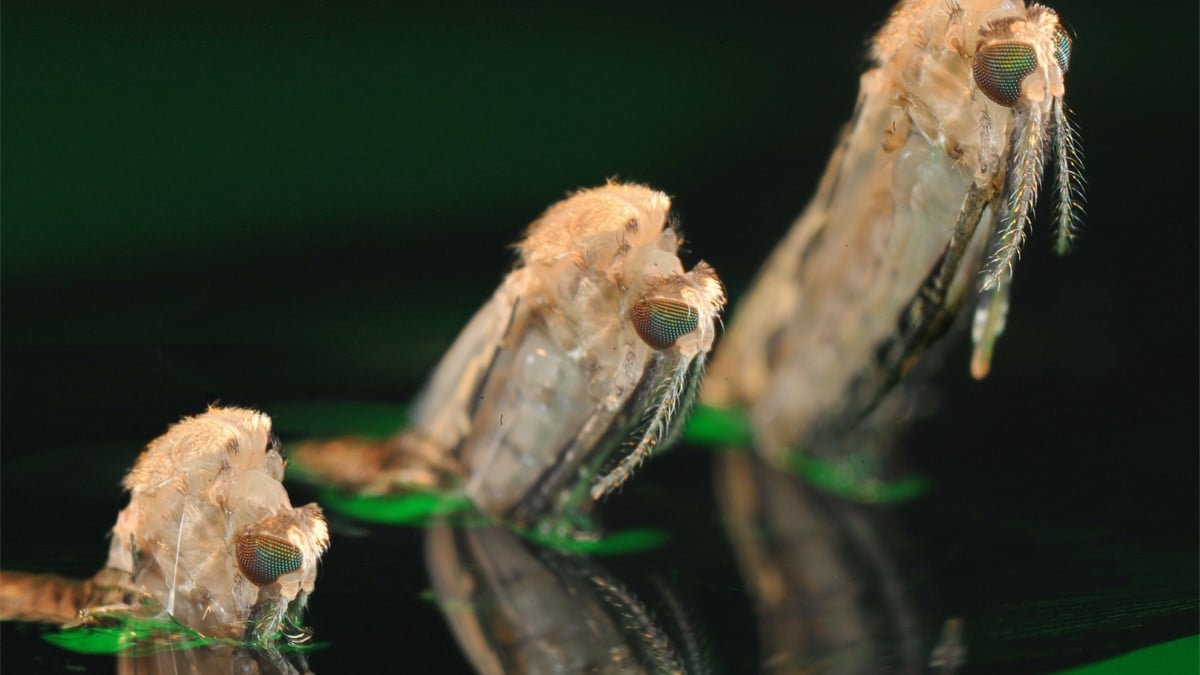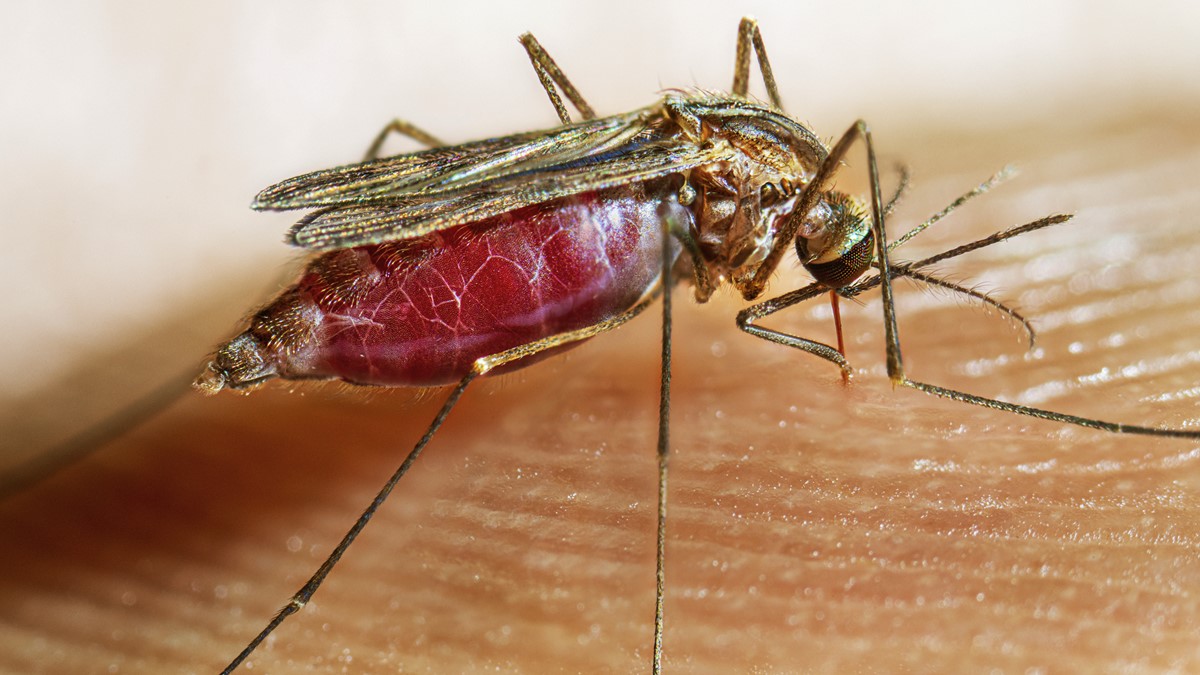At a glance
- Adult female Anopheles mosquitoes lay eggs directly on water.
- Larvae hatch from mosquito eggs and live in water.
- Larvae develop into pupae.
- Pupae develop into adult, flying mosquitoes.
- Adult female mosquitoes bite people and animals. Mosquitoes need blood to produce eggs.
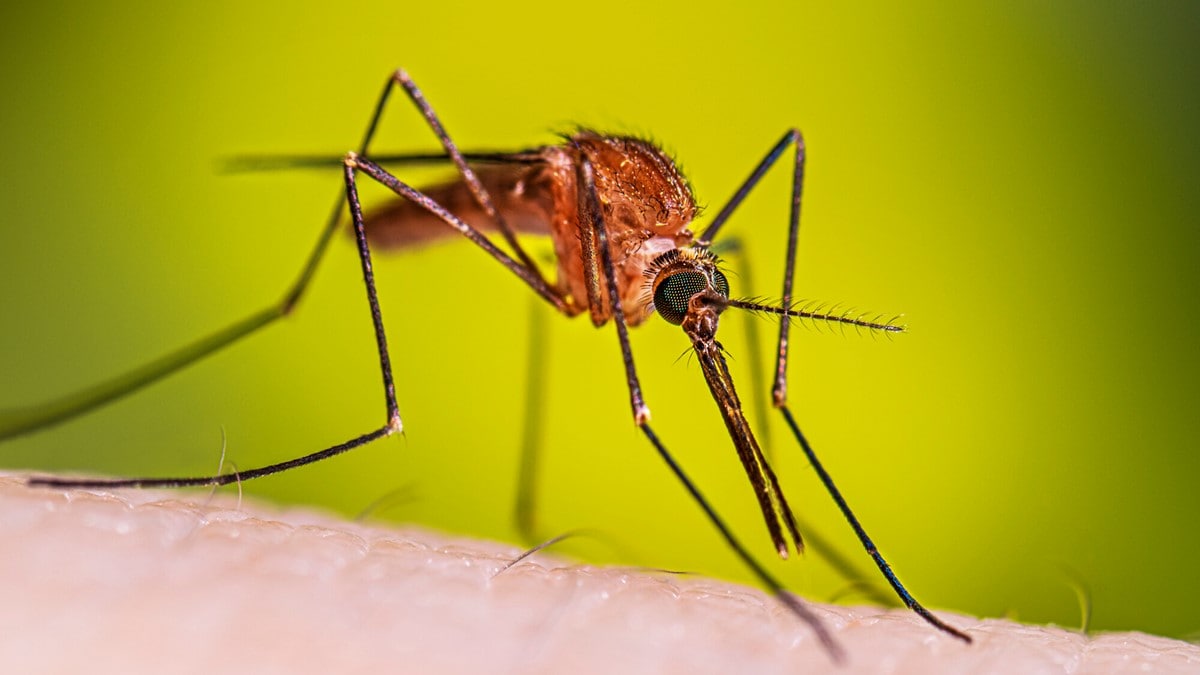
Anopheles species mosquitoes
Anopheles species mosquitoes live in some areas of the United States. A mosquito egg takes 10–14 days to develop into an adult mosquito.

Life stages
Eggs
- Anopheles, the mosquitoes that spread malaria, like to lay their eggs in marshy areas or near the banks of shallow creeks and streams.
- Adult, female mosquitoes lay eggs one at a time directly on water. The eggs float on the surface of the water.
- Adult, female mosquitoes lay 50–200 eggs at a time.
- Eggs do not tolerate drying out.
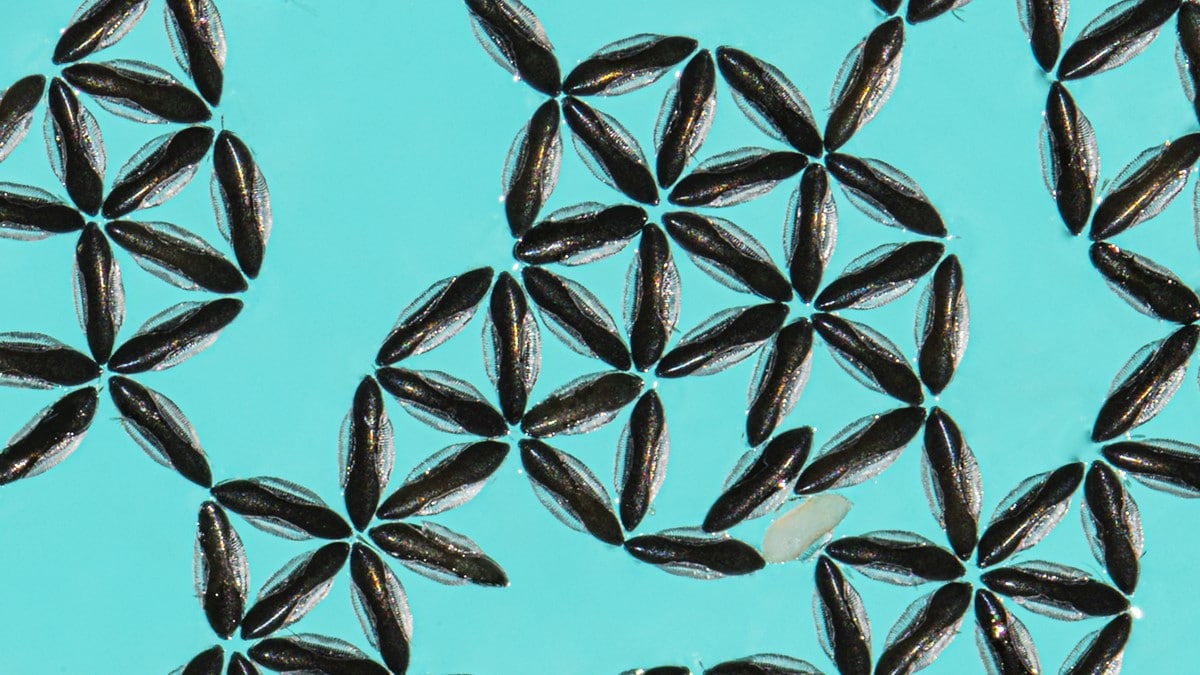
Larvae
- Larvae live in the water. They hatch from mosquito eggs.
- Anopheles larvae breathe by using special organs (called spiracles) located on their abdomen.
- Larvae shed their skin (molt) four times during this stage before becoming pupae.
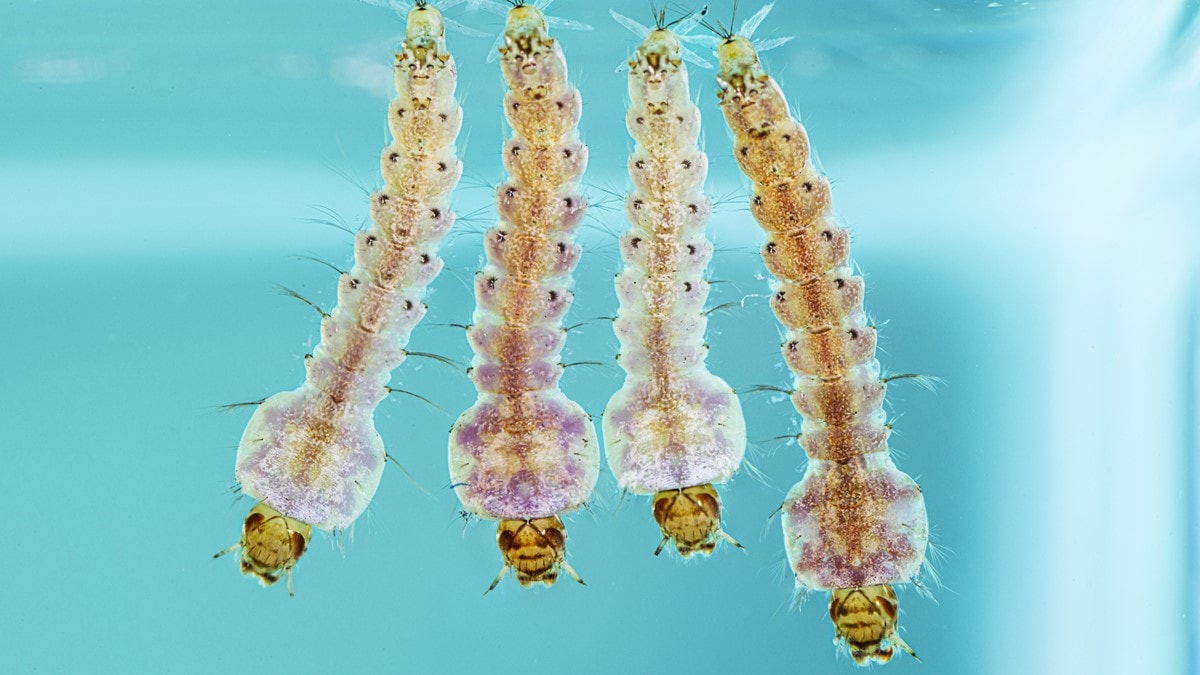
Pupae
- Pupae live in water. Pupae do not have external mouthparts, so they do not eat during this stage.
- An adult mosquito emerges from a pupa and flies away.
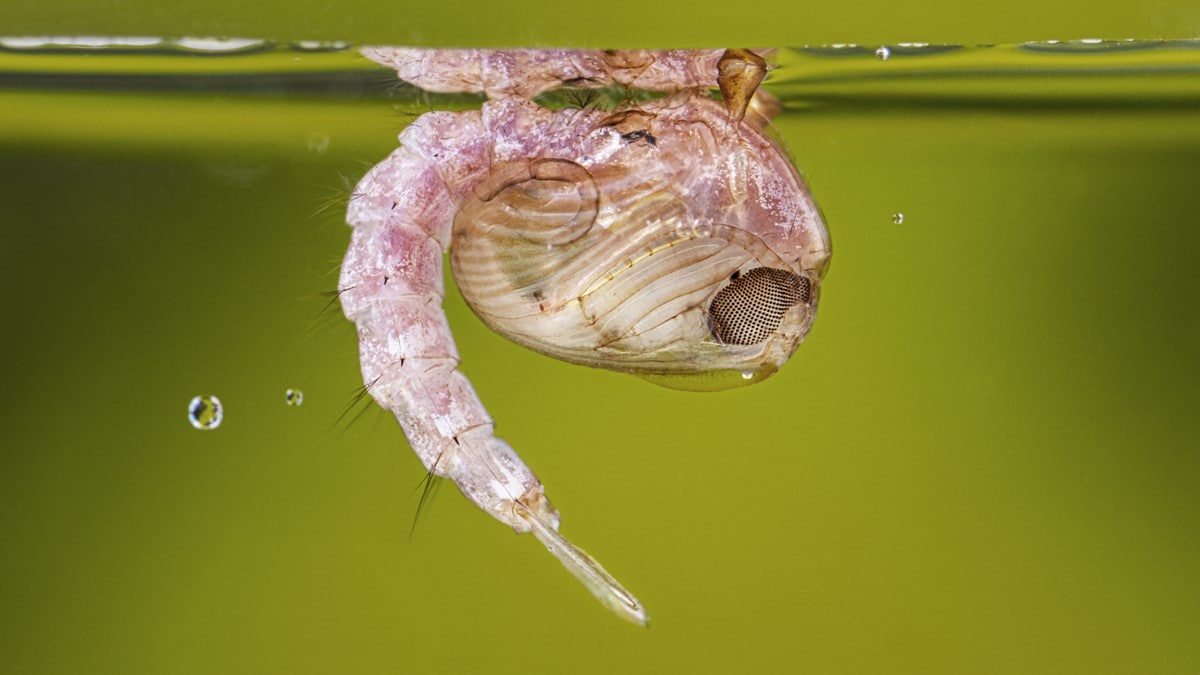
Adult
- Adult female Anopheles mosquitoes bite people and animals, usually late in the evening or at night. Female mosquitoes need blood to produce eggs.
- Adult female Anopheles mosquitoes prefer to feed on people or animals, such as cattle.
- Some Anopheles male mosquitoes fly in large swarms, usually around dusk, and the females fly in the swarms to mate.
- After blood feeding, a female mosquito rests for a few days while the blood digests and the eggs develop. After the eggs develop, the female lays them in water sources.
- Anopheles mosquitoes generally don't fly more than 1.2 miles (2 km) from their larval habitats.
- Anopheles mosquitoes are attracted to dark, sheltered areas for resting during the daytime.
